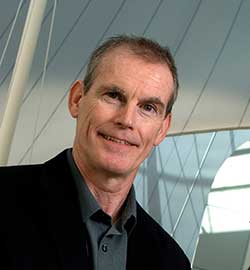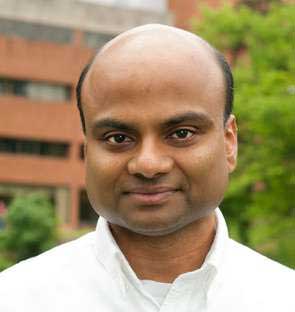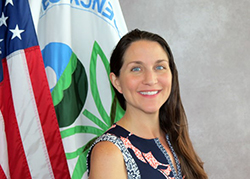Contaminated Sediments Virtual Workshop Session 3 - Remediation Technologies
Sponsored by: US EPA Office of Research and Development (ORD)'s Office of Science Policy
Archived: Wednesday, November 13, 2019
The US EPA Office of Research and Development / Office of Science Policy (ORD/OSP) in cooperation with the Office of Land and Emergency Management (OLEM) is sponsoring a 4-part virtual workshop series to address current challenges at contaminated sediment sites. The aim of the virtual workshop is to provide interactive discussions between subject matter expert panelists and workshop participants. Consequently, each virtual session will feature brief topic introductions by panelists followed by facilitated panelist/participant discussions which will include opportunities for questions and answers, brainstorming, identification of concerns and research needs, and quick spot surveys. If you have a contaminated sediment site, this is the virtual workshop for you!
Update: Based on the high interest in this series and feedback, the event has been extended to allow for more time questions with the presenters. All scheduled presentations with brief Q&A periods will be delivered as planned during the original time from 1 to 3:00pm eastern. Immediately following the scheduled presentations, presenters will remain on the webinar for an additional 30 minutes to address more questions and comments from the participants. If you are unable to stay on for the additional Q&A time, please know the entire event will be recorded and available to playback on demand including the additional Q&A time.
The third session will focus on both innovative and established remediation technologies available for contaminated sediment sites, as well as technology selection criteria. The third session will address the following topics:
- Remediating mercury-contaminated sediment sites,
- Selection criteria for sediment remediation technologies,
- PCB dechlorinating and degrading with bioamended GAC, and
- Reactive caps for dissolved and non-aqueous phase-liquids (NAPL).
Upcoming Contaminated Sediments Virtual Workshop Series Webinars
Contaminated Sediments Virtual Workshop Series Archives
- Contaminated Sediments Virtual Workshop Session 4 - Long-Term Monitoring (Nov 20, 2019)
- Contaminated Sediments Virtual Workshop Session 3 - Remediation Technologies (Nov 13, 2019)
- Contaminated Sediments Virtual Workshop Session 2 - Risk Assessment (Oct 30, 2019)
- Contaminated Sediments Virtual Workshop Session 1 - Site Characterization (Oct 21, 2019)
Accessibility, Recording, and Content Disclaimer
Rehabilitation Act Notice for Reasonable Accommodation
It is EPA's policy to make reasonable accommodation to persons with disabilities wishing to participate in the agency's programs and activities, pursuant to the Rehabilitation Act of 1973, 29 U.S.C. 791. Any request for accommodation should be made to Jodi McCarty at 773-934-3091 or jodi.mccarty@icf.com, preferably one week or more in advance of the webinar, so that EPA will have sufficient time to process the request. EPA would welcome specific recommendations from requestors specifying the nature or type of accommodation needed. Please note that CLU-IN provides both alternate phone call-in options and closed captioning for all webinars, and requests for these specific accommodations are not necessary.
Webinar Recording
By participating in this CLU-IN webinar, you automatically agree to authorize recording of audio and visual content presented during this live event and consent to subsequent use of this recording in the public domain by the U.S. Environmental Protection Agency. This recording may include questions, comments and poll responses provided by you during the live event in addition to your name, voice, image or likeness. This recording will be made available after the conclusion of the live event as part of the CLU-IN webinar archives, and will remain available indefinitely. If you do not wish to consent to the recording, please do not join the live event, and contact Jean Balent at 202-566-0832 or balent.jean@epa.gov to discuss your concerns.
Content Disclaimer
This webinar is intended solely to provide information to the public. The views and opinions expressed as part of this webinar do not necessarily state or reflect those of the U.S. Environmental Protection Agency. It is not intended, nor can it be relied upon, to create any rights enforceable by any party in litigation with the United States, or to endorse the use of products or services provided by specific vendors. With respect to this webinar, neither the United States Government nor any of their employees, makes any warranty, express or implied, including the warranties of merchantability and fitness for a particular purpose, or assumes any legal liability or responsibility for the accuracy, completeness, or usefulness of any information, apparatus, product, or process disclosed, or represents that its use would not infringe privately owned rights.
Presenters:
Dr. Chris Eckley, US EPA Region 10 (Eckley.chris@epa.gov or 206-553-0510)
Dr. Eckley received his BSc in Environmental Science from Western Washington University (1997) and subsequently worked as a Biological Technician for the US National Park Service for the next 4 years at Olympic National Park, WA. In 2001, he began doing mercury (Hg) research as part of his MSc at Trent University in Ontario, Canada and has been actively engaging in Hg research ever since. His MSc research focused on utilizing Hg stable isotopes as tracers of methylation activity in lakes across Canada and the US. Dr Eckley received his PhD in Physical Geography (2007) from the University of Toronto which focused on the influence of urban environments on Hg cycling. Subsequently, his two Postdoctoral positions at the University of Nevada, Reno and Environment Canada focused on identifying non-point sources of Hg emissions from active industrial mining and smelting sties. Dr. Eckley started working at the EPA Region 10 office in 2011 as a Mining Geochemist in the Office of Environmental Assessment. His current work is split between working on Superfund site projects and reviewing Environmental Impact Statements for newly proposed mines.
 Kevin R. Sowers, Ph.D., Department of Marine Biotechnology, University of Maryland Baltimore County (sowers@umbi.umd.edu or 410-234-8878)
Kevin R. Sowers, Ph.D., Department of Marine Biotechnology, University of Maryland Baltimore County (sowers@umbi.umd.edu or 410-234-8878)
Kevin R. Sowers, Ph.D. is an anaerobic microbiologist with over 30 years experience in biomass conversion to methane and bioremediation. Dr. Sowers received his doctoral degree in anaerobic microbiology from Virginia Tech studying conversion of giant brown kelp to biomethane with support from the Gas Research Institute and conducted postdoctoral research at UCLA on the molecular biology of methanogenesis with support from the Office of Navel Research. He joined the University of Maryland Biotechnology Institute in 1991 and he is currently a professor and associate chair in the Department of Marine Biotechnology, University of Maryland Baltimore County, and associate director of the Institute of Marine & Environmental Technology. Current research projects include the application of methanogenic processes for waste management in land-based recirculating mariculture systems and development of novel approaches for in situ bioremediation of PCBs in sediments. Additional experience includes the identification and isolation of difficult-to-grow microorganisms with unique degradation capabilities and scale-up of biomass for in-situ applications. He has presented his research at over 100 scientific meetings and over 60 national and international invited lectures. His research has generated over 75 peer-reviewed journal articles, 20 book chapters, and several patents and has been featured in radio interviews, newspaper articles and museum exhibits. He is a member of AAAS, ACS, ASM and SIM, has been an editorial board member for the Journal of Bacteriology, Frontiers in Microbiology and Archaea, and served as a reviewer for numerous domestic and international granting agencies and peer-reviewed journals.
 Upal Ghosh, Ph.D., Department of Chemical, Biochemical, and Environmental Engineering at the University of Maryland Baltimore County (ughosh@umbc.edu or 410-455-8665)
Upal Ghosh, Ph.D., Department of Chemical, Biochemical, and Environmental Engineering at the University of Maryland Baltimore County (ughosh@umbc.edu or 410-455-8665)
Upal Ghosh Ph.D., is a professor in the department of Chemical, Biochemical, and Environmental Engineering at the University of Maryland Baltimore County. He has a B. Tech in Chemical Engineering from the Indian Institute of Technology, Bombay, India, an M.S. and Ph.D. in Civil and Environmental Engineering from the State University of New York at Buffalo and completed a Postdoc at Carnegie Mellon University and worked as a Research Associate at Stanford University. He is currently the Principal investigator for the Development of in-situ Mercury Remediation Approaches Based on Methylmercury Bioavailability NIEHS R01 grant and recently completed and NIEHS R01 grant titled Combining Bioavailability Assays with Modeling to Predict PCBs in Fish after Remediation. His group performs research in environmental engineering and science with a focus on the fate, effects, and remediation of toxic pollutants in the environment. They use multidisciplinary tools to investigate exposure and bioavailability of organic and metal contaminants to organisms and this new understanding is used to develop novel remediation technologies and site-specific remediation goals. Recent projects have focused on contaminants such as PCBs, PAHs, pesticides, dioxins, and mercury. For more information please refer to Dr. Ghosh's faculty profile.
Keegan L. Roberts, Ph.D., PE, Principal Environmental Engineer, CDM Smith (robertsk@cdmsmith.com or 303-383-2352)
Keegan Roberts is a Principal Environmental Engineer with CDM Smith and is based in Denver, CO. He has a BS, MS, and Ph.D. in Civil Engineering from Louisiana State University. He is currently CDM Smith's lead sediment engineer and technical advisor at numerous sediment Superfund sites, and has worked with contaminated sediments across the continental United States and in the Caribbean. These sites have ranged from heavily utilized industrial waterways to natural rivers with thousands of acres of connected and impacted floodplains. His general experience ranges from sediment site assessment, through evaluation of chemical fate and transport, to selection and implementation of remediation alternatives. His current technical detailed interests include assessment of sediment cap performance, ebullition studies, and appropriate use and weighting of various lines of evidence, including models and empirical data, in remedy selection.
Moderators:
 Jean Balent, U.S. EPA Technology Innovation and Field Services Division (balent.jean@epa.gov or 202-566-0832)
Jean Balent, U.S. EPA Technology Innovation and Field Services Division (balent.jean@epa.gov or 202-566-0832)
Ms Balent is on the staff of the EPA's Technology Innovation and Field Services Division where she has worked to collect and disseminate hazardous waste remediation and characterization information since 2003. Ms Balent manages the Clean Up Information Network website and actively supports online communication and collaboration resources available to EPA. She formerly worked with the US Army Corps of Engineers Environmental Engineering Division in the Buffalo District. Ms Balent was also a member of the SUNY-Buffalo Groundwater Research Group where she constructed and tested large scale models of groundwater flow. Ms Balent has also conducted research relating to the Great Lakes, environmental remediation, and brownfields re-development. She holds a Bachelor's degree in environmental engineering from SUNY-Buffalo and a Master's degree in Information Technology from AIU.
James Rice, ICF International Inc. (James.Rice@icf.com)
Mr. Rice is Senior Geologist at ICF with more than 30 years of experience in the environmental consulting industry. Mr. Rice has been involved in a wide range of environmental investigation, assessment and remediation projects for EPA, DOD, DOE and commercial clients using traditional and innovative tools and approaches. He currently provides technical support to EPA OSRTI with optimization and technology innovation and integration where he helps site teams improve characterization and remediation by applying best practices such as systematic planning, 3-dimensional visualization and analysis, high resolution site characterization and CSM development. Mr. Rice also develops and delivers technical training for several EPA courses including Incremental Sampling, Best Practices in Site Characterization through the Remedial Process, and High Resolution Site Characterization.
Webinar Slides and References:
-
 Slide Presentation for James Rice, ICF International Inc. (273KB/PDF)
Slide Presentation for James Rice, ICF International Inc. (273KB/PDF)
-
 Slide Presentation for Dr. Chris Eckley, US EPA Region 1 (8.04MB/PDF)
Slide Presentation for Dr. Chris Eckley, US EPA Region 1 (8.04MB/PDF)
-
 Slide Presentation for Keegan L. Roberts, Ph.D., PE, CDM Smith (3.64MB/PDF)
Slide Presentation for Keegan L. Roberts, Ph.D., PE, CDM Smith (3.64MB/PDF)
-
 Slide Presentation for Upal Ghosh, Ph.D., Department of Chemical, Biochemical, and Environmental Engineering at the University of Maryland Baltimore County (11.4MB/PDF)
Slide Presentation for Upal Ghosh, Ph.D., Department of Chemical, Biochemical, and Environmental Engineering at the University of Maryland Baltimore County (11.4MB/PDF)
-
 Slide Presentation for Kevin R. Sowers, Ph.D., Department of Marine Biotechnology, University of Maryland Baltimore County (15.4MB/PDF)
Slide Presentation for Kevin R. Sowers, Ph.D., Department of Marine Biotechnology, University of Maryland Baltimore County (15.4MB/PDF)
Webinar Slides and References:
-
 Slide Presentation for James Rice, ICF International Inc. (273KB/PDF)
Slide Presentation for James Rice, ICF International Inc. (273KB/PDF)
-
 Slide Presentation for Dr. Chris Eckley, US EPA Region 1 (8.04MB/PDF)
Slide Presentation for Dr. Chris Eckley, US EPA Region 1 (8.04MB/PDF)
-
 Slide Presentation for Keegan L. Roberts, Ph.D., PE, CDM Smith (3.64MB/PDF)
Slide Presentation for Keegan L. Roberts, Ph.D., PE, CDM Smith (3.64MB/PDF)
-
 Slide Presentation for Upal Ghosh, Ph.D., Department of Chemical, Biochemical, and Environmental Engineering at the University of Maryland Baltimore County (11.4MB/PDF)
Slide Presentation for Upal Ghosh, Ph.D., Department of Chemical, Biochemical, and Environmental Engineering at the University of Maryland Baltimore County (11.4MB/PDF)
-
 Slide Presentation for Kevin R. Sowers, Ph.D., Department of Marine Biotechnology, University of Maryland Baltimore County (15.4MB/PDF)
Slide Presentation for Kevin R. Sowers, Ph.D., Department of Marine Biotechnology, University of Maryland Baltimore County (15.4MB/PDF)
Additional Resources:
If you have a suggested topic or idea for a future CLU-IN internet seminar, please contact:
Technology Integration and Information Branch
PH: 202-566-0832 | Email: balent.jean@epa.gov
Technology Integration and Information Branch
PH: 202-566-0875 | Email: adam.michael@epa.gov





